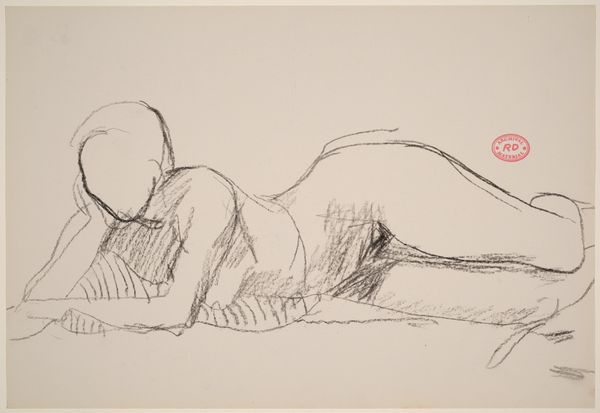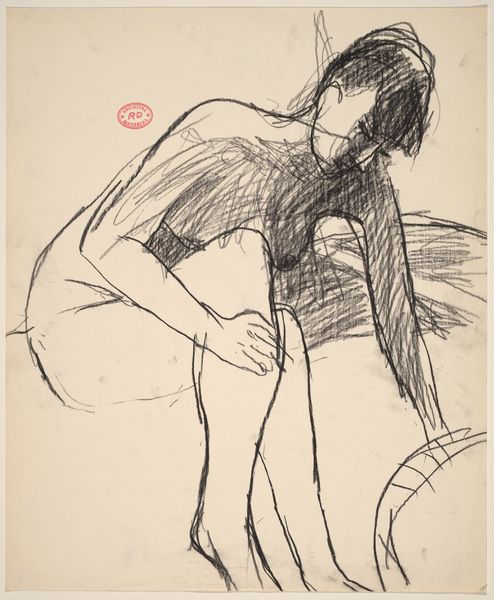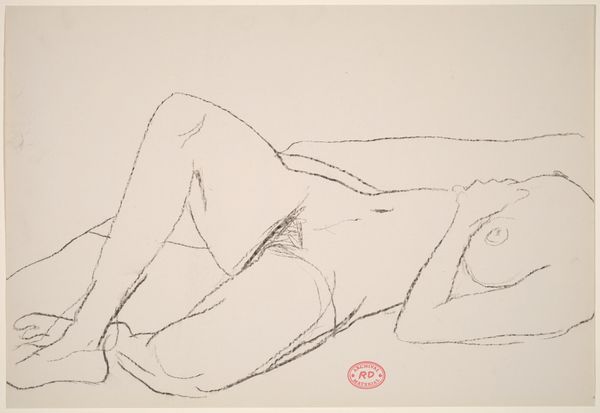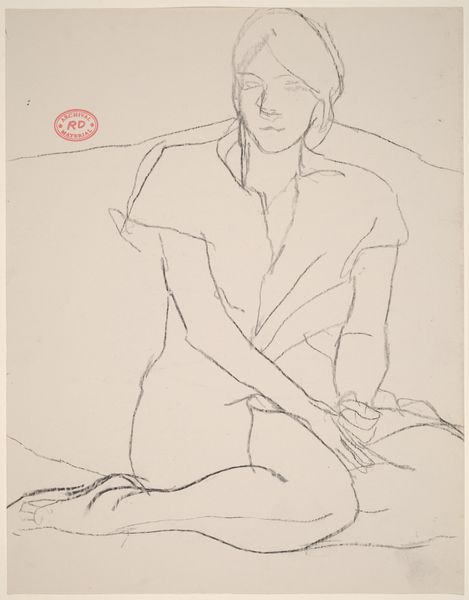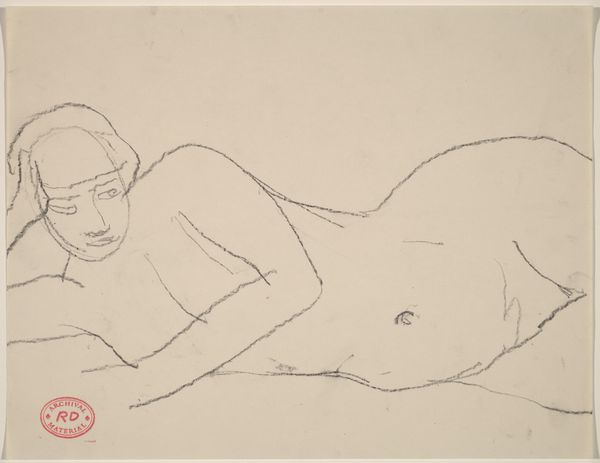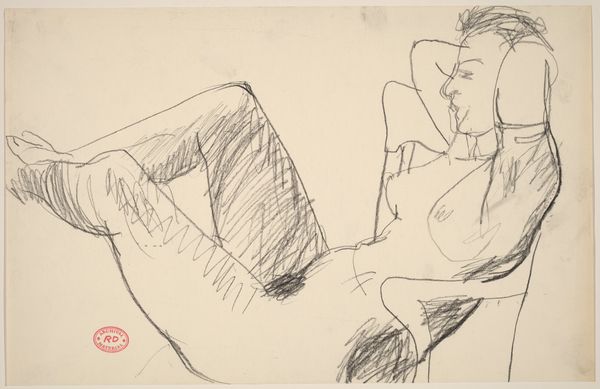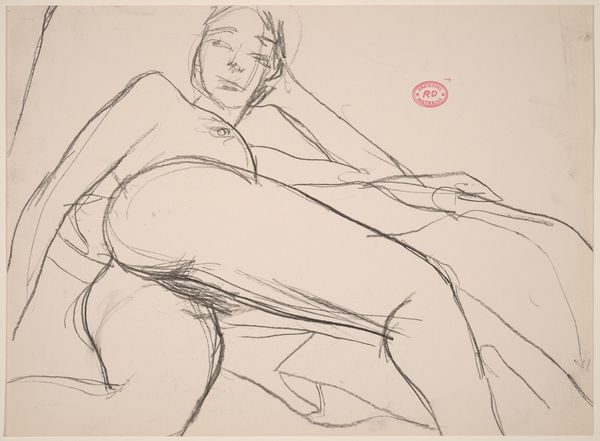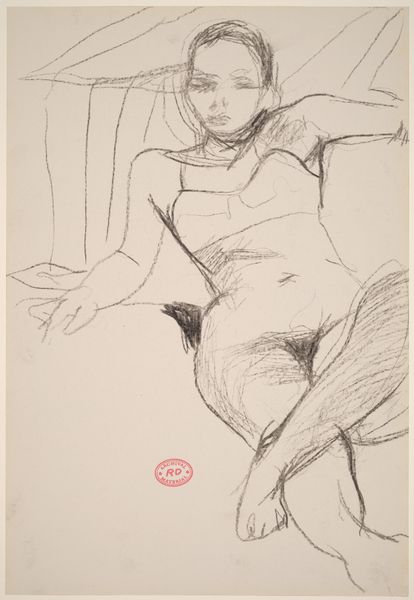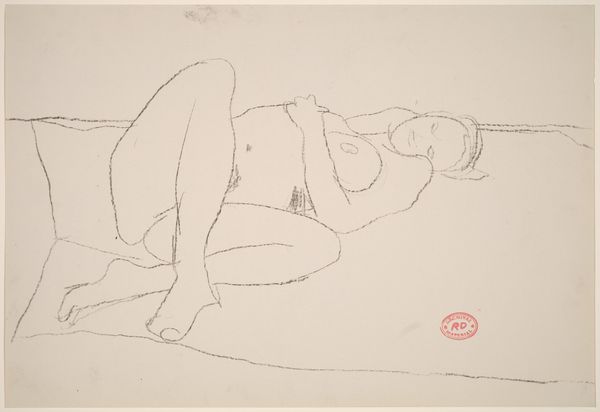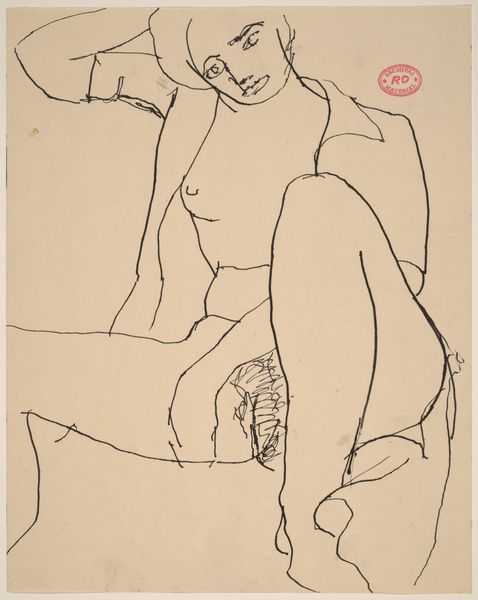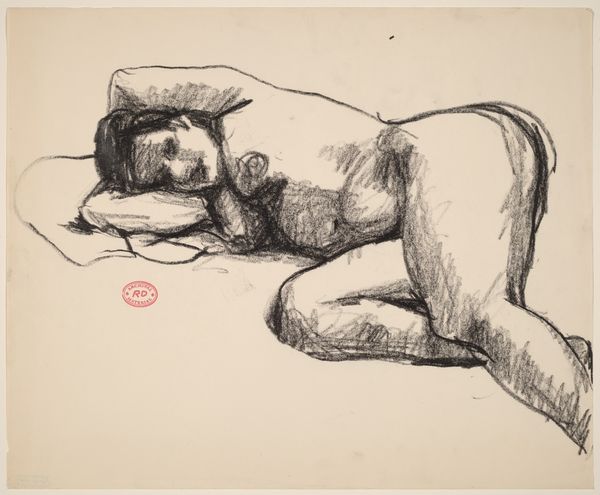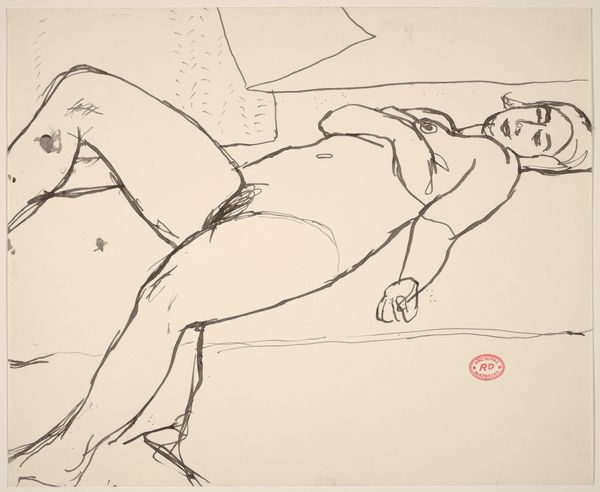![Untitled [model lying with her belly on the bed and looking up] by Richard Diebenkorn](/_next/image?url=https%3A%2F%2Fd2w8kbdekdi1gv.cloudfront.net%2FeyJidWNrZXQiOiAiYXJ0ZXJhLWltYWdlcy1idWNrZXQiLCAia2V5IjogImFydHdvcmtzLzM3N2VkMTM2LWZjNDMtNDhlNC05ZWI5LTgxZTFlZDM2M2I2Yy8zNzdlZDEzNi1mYzQzLTQ4ZTQtOWViOS04MWUxZWQzNjNiNmNfZnVsbC5qcGciLCAiZWRpdHMiOiB7InJlc2l6ZSI6IHsid2lkdGgiOiAxOTIwLCAiaGVpZ2h0IjogMTkyMCwgImZpdCI6ICJpbnNpZGUifX19&w=3840&q=75)
Untitled [model lying with her belly on the bed and looking up] 1955 - 1967
0:00
0:00
drawing, pencil
#
portrait
#
drawing
#
ink drawing
#
bay-area-figurative-movement
#
pencil
#
portrait drawing
Dimensions: overall: 27.9 x 43.2 cm (11 x 17 in.)
Copyright: National Gallery of Art: CC0 1.0
Editor: So, here we have Richard Diebenkorn’s “Untitled [model lying with her belly on the bed and looking up],” likely created between 1955 and 1967. It’s an ink and pencil drawing that, to me, feels both intimate and a little unsettling. What do you see in this piece? Curator: It’s interesting that you find it unsettling. I think its power comes from Diebenkorn capturing a moment of vulnerability and reinterpreting conventional portraiture. Consider the gaze—it challenges the objectification often present in depictions of women. What happens when we examine it through the lens of feminist art history? How does it contrast with, say, the male gaze prevalent in art of that period? Editor: That’s a great point. The woman’s gaze is directed upward, almost questioning, and the looseness of the lines avoids idealization. The gaze certainly impacts how one might receive or connect to this image. Do you see the rough lines and unfinished elements also carrying social context or historical reflection? Curator: Absolutely. The raw, unrefined quality can be read as a commentary on the performativity of femininity itself. Rather than presenting a polished image, Diebenkorn leaves the process visible, disrupting the notion of inherent beauty. Editor: I never would have connected those formal elements to such pointed commentary about social context. So in effect, the artistic process itself becomes a tool for critical insight? Curator: Exactly. By resisting traditional artistic conventions, Diebenkorn invites us to question established power structures and societal norms of viewing. We get to confront an idea as it's constructed, not as an inherent truth. Editor: That’s fascinating! It reframes the entire piece for me. I see the subject as much more empowered. Curator: Indeed. I find it vital to examine this, and all art, with the perspective that is historically contextual and challenging.
Comments
No comments
Be the first to comment and join the conversation on the ultimate creative platform.
